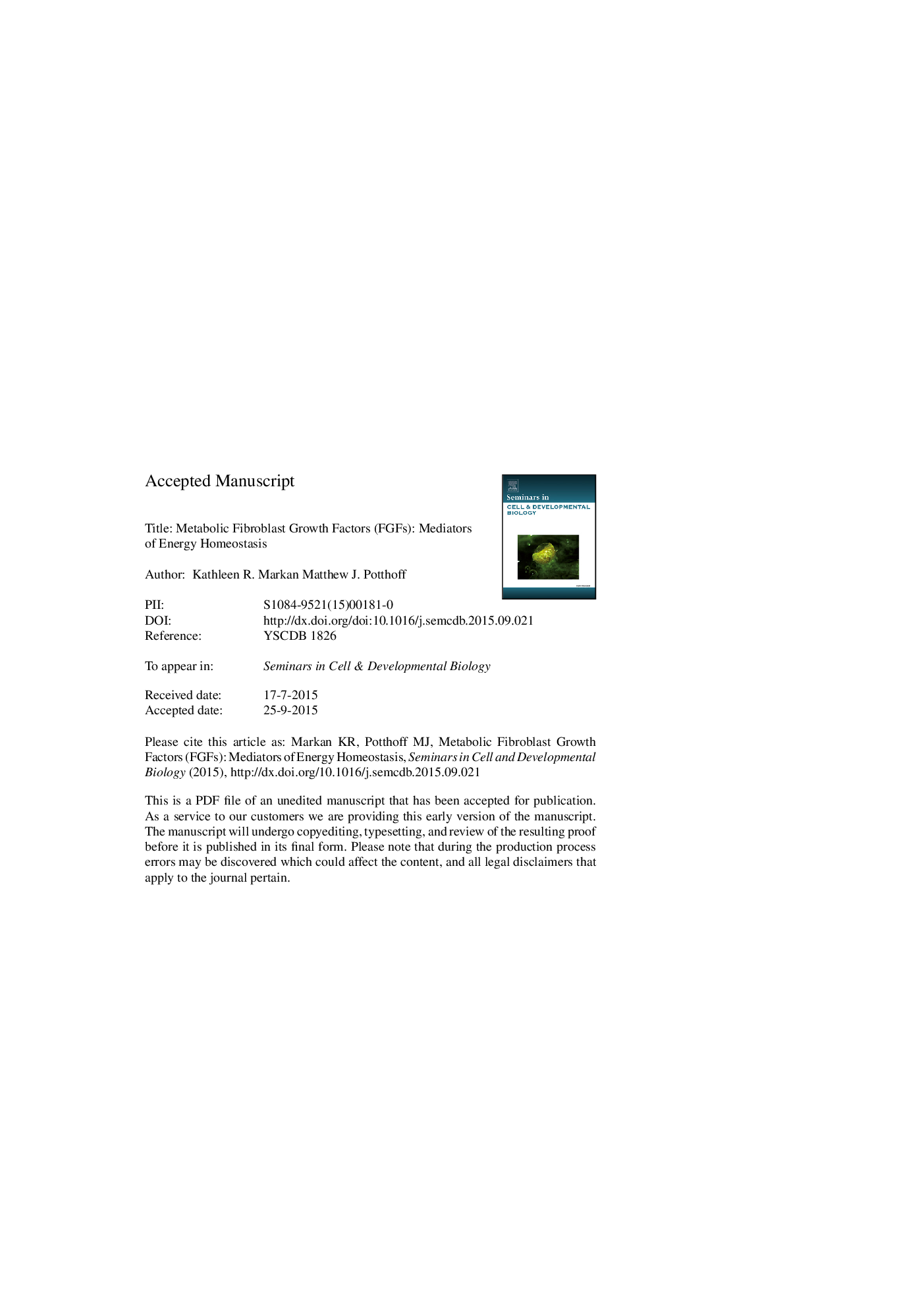| Article ID | Journal | Published Year | Pages | File Type |
|---|---|---|---|---|
| 8480104 | Seminars in Cell & Developmental Biology | 2016 | 33 Pages |
Abstract
The metabolic fibroblast growth factors (FGFs), FGF1, FGF15/19, and FGF21 differ from classic FGFs in that they modulate energy homeostasis in response to fluctuating nutrient availability. These unique mediators of metabolism regulate a number of physiological processes which contribute to their potent pharmacological properties. Administration of pharmacological doses of these FGFs causes weight loss, increases energy expenditure, and improves carbohydrate and lipid metabolism in obese animal models. However, many questions remain regarding the precise molecular and physiological mechanisms governing the effects of individual metabolic FGFs. Here we review the metabolic actions of FGF1, FGF15/19, and FGF21 while providing insights into their pharmacological effects by examining known biological functions.
Keywords
FGF1FGF19FGFBATICVintracerebroventricularFGF15FGF21DIOSNAFGFRChREBPob/obUcp1Glucose effectivenessWhite adipose tissuebrown adipose tissueCNSdiet induced obesitycentral nervous systemfibroblast growth factorSympathetic nerve activityMetabolismObesityknockoutcarbohydrate response element binding proteinuncoupling protein 1WATfibroblast growth factor receptor
Related Topics
Life Sciences
Biochemistry, Genetics and Molecular Biology
Cell Biology
Authors
Kathleen R. Markan, Matthew J. Potthoff,
